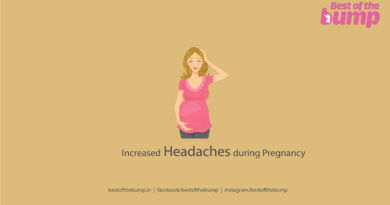Breech Position | What It Means if Your Baby Is Breech
Breech Position – Bringing a new life into the world is a miraculous journey filled with anticipation and excitement. As expectant parents eagerly await the arrival of their little ones, they often encounter various aspects of pregnancy that may raise questions and concerns. One such concern is the breech position, a term that might sound daunting but is not uncommon. In this comprehensive guide, we’ll explore what it means if your baby is breech, the different types of breech positions, potential causes, and what steps can be taken for a safe and smooth delivery. Let’s delve into the intricacies of breech presentations during pregnancy.
What is Breech Position?
The term “breech” refers to a fetal position where the baby’s buttocks or feet are positioned to enter the birth canal first instead of the head. Typically, babies settle into a head-down position in the womb during the later stages of pregnancy, which is considered the optimal position for delivery. However, approximately 3-4% of pregnancies involve a breech presentation.
Types of Breech Positions
- Frank Breech: In this position, the baby’s buttocks lead the way, with the legs sticking straight up in front of the body and the feet near the head.
- Complete Breech: The baby sits cross-legged with both knees bent and feet near the buttocks.
- Footling or Incomplete Breech: One or both of the baby’s feet are positioned to come out first.
Causes of Breech Presentation
While the exact cause of breech presentation is often unknown, several factors may contribute to this positioning:
- Premature Birth: Babies born before full term may not have had enough time to move into the head-down position.
- Multiple Pregnancies: Breech presentation is more common in pregnancies with twins or multiples.
- Uterine Conditions: Abnormalities in the shape or size of the uterus can affect fetal positioning.
- Fetal Abnormalities: Some congenital conditions may limit a baby’s ability to move into the head-down position.
Diagnosing Breech Presentation
Determining if your baby is breech is typically done through a physical examination by your healthcare provider. They will feel the position of the baby through your abdomen. In some cases, an ultrasound may be performed for a more accurate assessment.
Managing Breech Presentation
1. External Cephalic Version (ECV)
- ECV is a procedure where the healthcare provider manually tries to turn the baby into a head-down position on the mother’s abdomen.
- It is usually attempted after 37 weeks of pregnancy.
2. Natural Techniques
- Some pregnant individuals explore natural methods, such as specific exercises or certain positions, to encourage the baby to turn its head down.
3. Discussing Delivery Options
- Depending on various factors, your healthcare provider will discuss the best mode of delivery.
- Vaginal breech delivery, while rare, might be an option for some pregnancies.
- In many cases, a planned cesarean section (C-section) may be recommended to reduce potential risks associated with breech births.
The position of your baby in the womb is a crucial aspect of pregnancy, particularly as you approach the third trimester. Recognizing the signs that your baby is breech can help you stay informed and work closely with your healthcare provider to determine the best course of action. Here are some signs and indicators that may suggest your baby is in a breech position:
What are the signs that my baby is breech?
1. Sensation of Kicking in the Lower Belly
- If your baby is breech, you might feel distinct kicking sensations in your lower belly. This is because their feet are positioned downward.
2. Pressure under Ribcage
- Breech babies often exert pressure under the mother’s ribcage with their head. This can cause discomfort or a sense of fullness in the upper part of the abdomen.
3. Provider’s Examination
- During routine prenatal check-ups, your healthcare provider will palpate your abdomen to assess the position of the baby. They will feel for the head, back, and bottom to determine the baby’s orientation.
4. Ultrasound Confirmation
- If your healthcare provider suspects a breech presentation, they may opt for an ultrasound to get a detailed and accurate view of the baby’s position. This is a common and reliable method to confirm breech presentation.
Breech Positions Depending on the Legs’ Placement
a. Frank Breech
- The baby’s bottom is positioned first with feet up near the head. This creates a distinctive appearance with the baby’s legs sticking straight up in front of their body.
b. Complete Breech
- In this position, the baby’s bottom is first with the legs crossed. The baby sits cross-legged with both knees bent and feet near the buttocks.
c. Footling Breech
- One or both of the baby’s feet are positioned to come out first. This can increase the complexity of the delivery.
d. Oblique Breech
- The head is down, but it is pointed toward one of your hips, creating a diagonal position.
Remember, each pregnancy is unique, and the guidance provided by your healthcare team is tailored to your specific circumstances. Open communication and collaboration with your provider ensure the best possible outcome for you and your baby.
See this also –
- Is Bloating a Sign of Pregnancy?
- Makeup Ingredients to Avoid During Pregnancy
- Your Baby at Week 40
- Positive Parenting Affirmations to Boost Your Mental Health
- Breech Baby: Causes, Complications, Turning & Delivery




